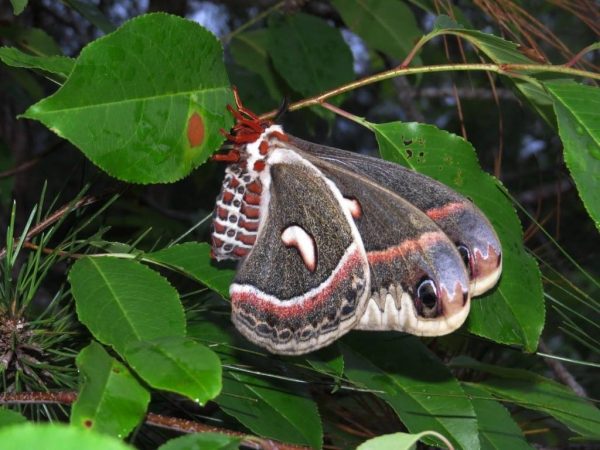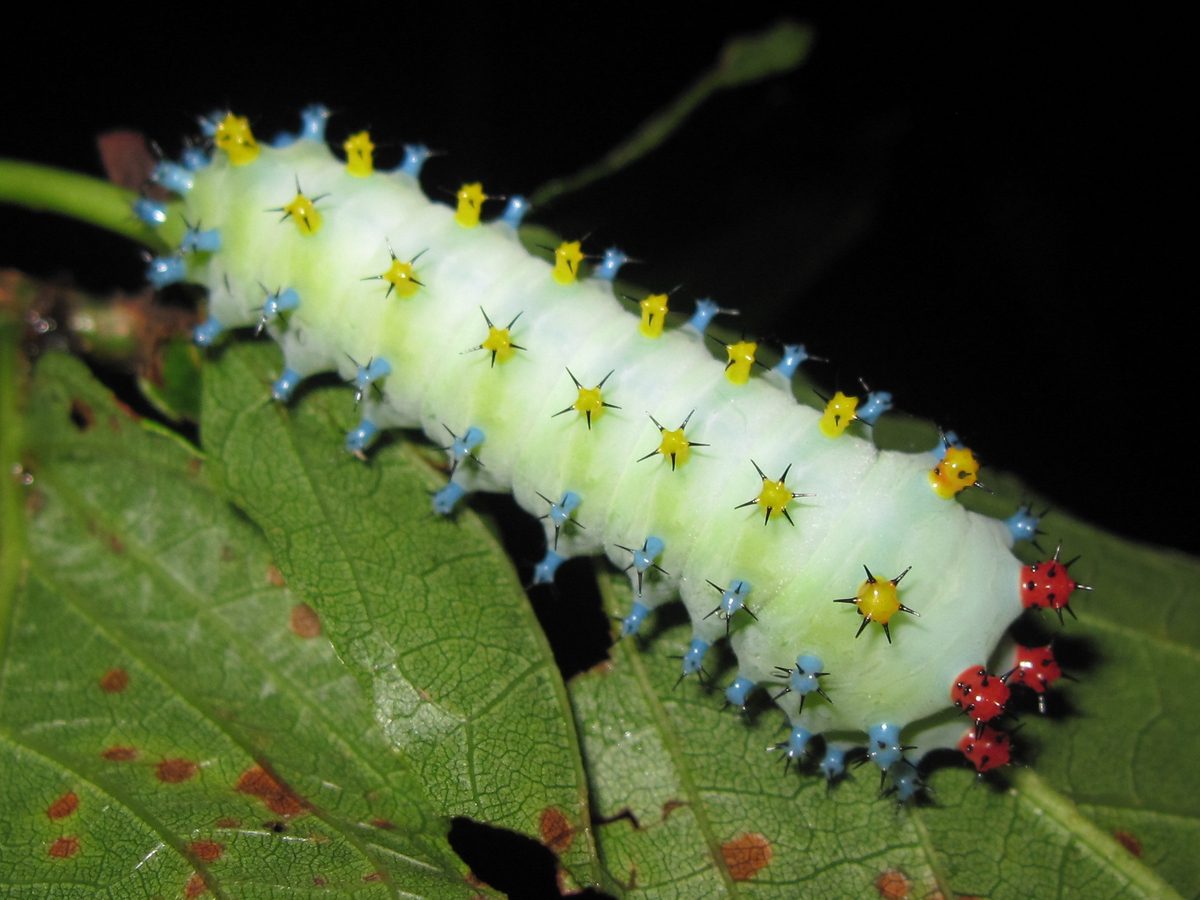North America’s largest moth

The Cecropia moth (Hyalophora cecropia) with a wingspan of 5-6 inches, is the largest moth found in North America. They are a member of Saturniidae family, or giant silk moths, and inhabit hardwood forests east of the Rocky Mountains in the U.S. and Canada. They live only 5-6 days typically and are mostly nocturnal, but are drawn to house and street lights, where most lucky people may encounter them on a warm spring night.
Unlike many moths that have either showy caterpillar phases or showy adult phases, or neither, both phases of the Cecropia moth are pretty spectacular. The adult is striking – with their reddish brown bodies and black and white accents.
Before I ever saw the adult in real life, I was fortunate to encounter the caterpillar, and it was the most unique I’d ever seen. They are bright neon green, and the one I saw seemed to be almost glowing at night, with tubercles (small round balls elevated from the body) of bright colors of red, yellow, and blue with black hairs sticking off them.

Like other silk moths, the adults have no mouthparts and do not feed – their only purpose is mating. The caterpillars feed on hardwood trees such as maple, birch, cherry, dogwood, and apple. The caterpillars weave cocoons in the fall and emerge with warm weather in the spring. Cecropia moths are univoltine, which means they have only one brood per year.
When they emerge and mate, the female moth emits pheromones, which the male can sense up to a mile away. Mating lasts from morning to evening, and the female may lay a hundred eggs. Some bolas spiders can mimic the female’s pheromone to lure males into their trap. The male can be visually distinguished from the female by having a slimmer body and more developed antennae. The female typically has a larger wingspan, as well.
There are threats to Cecropia moth, and one of the biggest of these is parasites. Some species of wasps and flies lay their eggs in the caterpillars, which hatch into larvae and ultimately eat and kill the caterpillar. Birds and squirrels feed on the larvae, while bats and owls eat the adults. Pesticide spraying and loss of habitat are also contributing to declines in this and other moth species. Consider yourself fortunate if you have a chance encounter this with striking and beautiful creature.